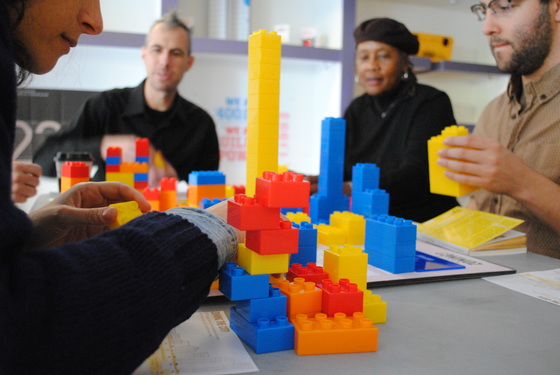Zoning law regulates land use across the city, and shapes buildings, blocks, and whole neighborhoods. It can be a tool for preservation or for rapid physical and economic development.
But how does it work? And why is it so controversial? The Center for Urban Pedagogy (CUP) created What Is Zoning? to help communities answer these questions. The toolkit includes a set of activities that break down density, bulk, land use, and how proposed rezonings could affect neighborhoods.
Inside the toolbox are infrastructure tiles, a two-sided gameboard, and hundreds of colorful plastic blocks that stack up to break down the basics of zoning. Lay out a brand new city, or max out your lot while you build up to topics like inclusionary and contextual zoning (and the dreaded Floor Area Ratio). A guidebook uses simple diagrams to explain how zoning works, and provides step-by-step instructions on how to lead your own workshops.
CUP designed the toolkit in collaboration with designers Jeff Lai and Andrew Sloat and an advisory group of dozens of community organizations, advocacy groups, and policy experts to meet the specific needs they faced in educating their constituents on neighborhood development issues.
During the development of the toolkit, hundreds of community members across NYC participated in What Is Zoning? workshops in community meetings, classrooms, staff trainings for organizers, and many other locations.
Buy a toolkit for your community organization, or purchase a guidebook separately to read all about zoning!
You can also purchase a refill pad of the worksheet. To purchase a replacement gameboard, please email: info@welcometocup.org
A Spanish version of the guidebook was launched in 2015. You can get your Spanish copy here.







